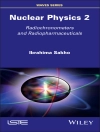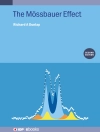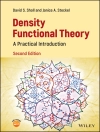Gas discharge plasma is the most common type of low-temperature plasma, with a large number of practical applications covering almost all areas of modern science and technology. This book is an introduction to the numerical modeling methods for gas discharge plasmas. It is intended to assist and direct graduate students and junior researchers, whose research activity deals with computational plasma physics. Topics covered include the essentials of basic modelling approaches (particle, fluid, and hybrid) for gas discharges, and the implementation of these methods with examples of glow (DC and RF) discharges. Numerical studies of nonlinear dynamics and formation of spatio-temporal patterns in gas discharge systems are also presented.
Key Features
- Focuses solely on gas discharge plasmas
- Covers basic modelling techniques, including particle, fluid, and hybrid
- Provides details of applications and implementation for the considered methods
- Special emphasis is given to the applicability and reliability of different modelling techniques
- Provides specific examples of numerical simulations of the gas discharge plasmas
If you model low pressure (non-thermal) plasmas, this book will provide the fundamental equations that can be used to simulate various aspects of the low-pressure plasma. You will also learn about the physics behind the equations through explanations and graphical plots of results including comparisons between simulations and experimental results. The reader would need a background in plasma physics and some familiarity with Boltzmann’s equation to fully appreciate this book.
John J Shea IEEE Electrical Engineering Magazine, May June 2021 Vol. 37
قائمة المحتويات
Preface
1 Modelling approaches for gas discharge plasmas
1.1 Introduction
1.2 Boltzmann kinetic equation and derivation of balance equations for the density, momentum and energy of plasma particles
1.3 Two-fluid equations for plasma 1.4 Fluid equations of plasma in drift-diffusion approximation 1.5 Limitations and applicability of the fluid model
2 Numerical simulation of gas discharges: fluid, particle, and hybrid methods
2.1 Preliminary technique
2.2 Finite Volume Method (FVM) for convection-diffusion equation
2.3 Fluid models for gas discharge
2.4 PIC/MCC method for simulation of gas discharges
2.5 Hybrid MC-fluid modelling of gas discharges
3 Numerical analysis of non-linear dynamics and transition to chaos in a gas discharge-semiconductor system 3.1 Model
3.2 Non-linear oscillations and transition to chaos in a gas discharge-semiconductor system 3.3 Pattern formation in the gas discharge-semiconductor system
عن المؤلف
Ismail Rafatov obtained his Ph D at the KRSU (Bishkek, Kirghizia) in 1999. Since 2004 he has been working at the Department of Physics of the Middle East Technical University (Ankara, Turkey), and is currently a Professor within this department. His research interests encompass computational plasma physics, nonlinear dynamics and chaos, and nonequilibrium pattern formation.
Anatoly Kudryavtsev received his MS and Ph D degrees in physics from the Leningrad State University (currently, Saint Petersburg State University, Russia), in 1976 and 1983, respectively. Since 1982 he has held the positions of junior researcher, senior researcher, and Associate Professor at the Department of Optics of this university. He is an expert in the physics of gas discharge plasma, and has published more than 150 papers and several monographs on the probe technique for plasma diagnostics and the physics of gas discharges.












